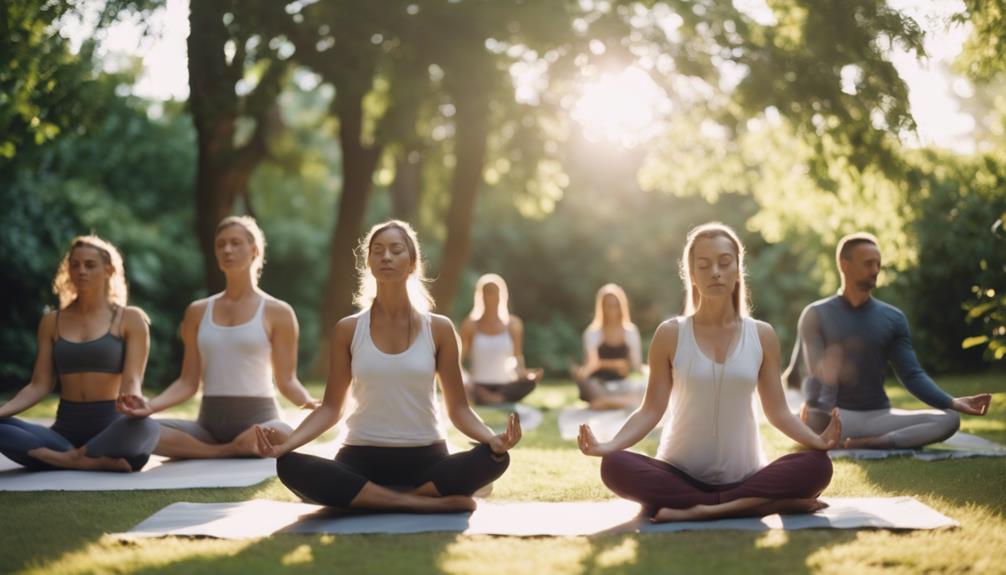Yoga has become a cornerstone of wellness and mindfulness in today’s fast-paced world. With roots tracing back thousands of years, this ancient practice offers a myriad of physical, mental, and spiritual benefits. In this blog post, we will explore the transformative power of yoga, its various forms, and how you can incorporate it into your daily life for optimal well-being.
Understanding Yoga: A Holistic Approach to Wellness
Yoga is more than just a physical exercise; it is a holistic approach to health that encompasses the mind, body, and spirit. Originating in ancient India, yoga combines physical postures (asanas), breathing exercises (pranayama), meditation, and ethical principles. The keyword phrase “yoga” captures the essence of this practice, which aims to harmonize the individual with their environment and cultivate inner peace. Whether you are seeking stress relief, physical fitness, or spiritual growth, yoga provides a comprehensive framework to achieve your goals.
The Physical Benefits of Practicing Yoga
One of the most significant advantages of yoga is its physical benefits. Regular practice can enhance flexibility, strength, and balance. Poses like downward dog, warrior, and tree help stretch and strengthen various muscle groups, promoting overall physical health. Furthermore, yoga improves posture and alignment, reducing the risk of injuries in daily activities. For those struggling with chronic pain or tension, yoga can serve as a therapeutic tool, offering gentle movements that alleviate discomfort. Incorporating yoga into your fitness routine can lead to a more resilient and agile body.
The Mental Clarity and Focus Gained Through Yoga
In addition to physical benefits, yoga significantly impacts mental health. The practice of mindfulness during yoga sessions encourages practitioners to focus on the present moment, enhancing mental clarity and concentration. Yoga techniques, such as meditation and breath control, can reduce anxiety and stress levels, which are prevalent in today’s society. Research shows that regular yoga practice lowers cortisol levels, the hormone responsible for stress, leading to a calmer mind and improved emotional stability. By incorporating yoga into your daily routine, you cultivate mental resilience and sharpen your focus.
Different Styles of Yoga: Finding Your Perfect Fit
Yoga is not a one-size-fits-all practice; it encompasses various styles, each with unique philosophies and techniques. Hatha yoga is ideal for beginners, focusing on basic postures and alignment. Vinyasa yoga offers a dynamic flow, linking breath with movement, while Ashtanga provides a more vigorous and structured approach. For those seeking relaxation, Yin yoga emphasizes deep stretching and meditation. Identifying the right style of yoga for your needs is crucial for maximizing the benefits of this practice. Experimenting with different types can lead you to discover what resonates most with your body and mind.
Creating a Yoga Routine: Tips for Beginners
Starting a yoga practice can be overwhelming, especially for beginners. However, establishing a routine is essential for reaping the full benefits of yoga. Begin by setting aside dedicated time each week for your practice, even if it’s just 15-30 minutes. Create a comfortable space at home where you can practice without distractions. Consider following online classes or joining a local studio to learn from experienced instructors. As you progress, listen to your body and modify poses as needed to prevent injury. Consistency is key, so find a rhythm that works for you and stick with it.
The Role of Breath in Yoga: Pranayama Techniques
Breath is a fundamental aspect of yoga, and mastering pranayama techniques can enhance your practice significantly. Pranayama, which translates to “breath control,” involves various breathing exercises that help regulate energy flow within the body. Techniques such as Ujjayi (victorious breath), Nadi Shodhana (alternate nostril breathing), and Kapalabhati (skull shining breath) are commonly practiced. These breathing exercises not only improve lung capacity but also promote relaxation and mental clarity. By integrating pranayama into your yoga routine, you can deepen your practice and cultivate a stronger connection between your mind and body.
Yoga and Spirituality: Connecting with Your Inner Self
Yoga is often regarded as a spiritual practice that allows individuals to connect with their inner selves. While the physical postures are essential, the spiritual aspect of yoga fosters self-awareness and personal growth. Many practitioners use meditation and mindfulness to explore their thoughts and emotions, leading to greater self-acceptance and compassion. The philosophy of yoga encourages individuals to look inward, cultivating a sense of purpose and fulfillment. Engaging with the spiritual side of yoga can enrich your life, helping you navigate challenges with grace and resilience.
Incorporating Yoga into Daily Life: Practical Tips
To truly harness the transformative power of yoga, it’s essential to incorporate it into your daily life. Start with small, manageable changes to create a sustainable practice. Consider setting intentions for your yoga sessions, focusing on what you hope to achieve. You can also integrate yoga into your daily routine by practicing mindfulness during mundane tasks, such as eating or walking. Additionally, consider joining a community or finding a yoga buddy to keep you motivated. By weaving yoga into your everyday life, you’ll cultivate a deeper sense of connection to yourself and the world around you.
Conclusion
The transformative power of yoga extends far beyond the mat. By embracing this ancient practice, you can improve your physical health, enhance mental clarity, and foster spiritual growth. Whether you’re a seasoned practitioner or just starting, the benefits of yoga are accessible to everyone. Incorporate different styles, techniques, and routines into your life to fully experience the myriad advantages that yoga offers. As you embark on this journey, remember that yoga is a personal practice—embrace it at your own pace, and enjoy the profound transformations it can bring to your life.How Much Do Yoga Instructors MakeWhat Are The Different Styles Of Yoga
